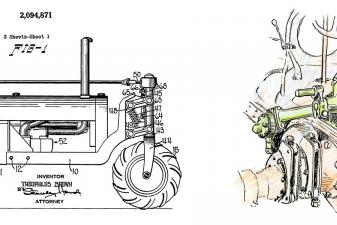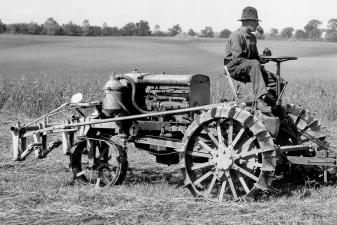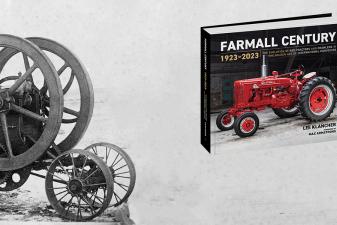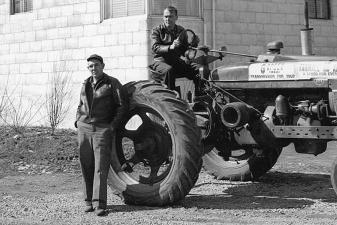John F. Steward and The Reaper Wars

The 100th Anniversary of the revolutionary Farmall tractor is celebrated in Farmall Century: 1923–2023, the authoritative model-by-model history that traces the evolution and design of the most significant farm tractors of the 20th century. Award-winning author Lee Klancher chronicles how and why the Farmall tractor came to exist and how it evolved with his signature blend of compelling stories, engaging text, and spectacular images. In this excerpt read about John Steward. Steward was one of the pioneers of the early farm tractor, and he started his career for Deering before moving on to IH. While at IH, he was a notable critic and legendarily cranky. His contributions were wide-ranging, and his famously cantankerous 1910 letter to the executive team blasting the current tractors may have directly led to some of the innovation that made its way to the Farmall.
As the reaper wars were beginning to erupt on American farms, fourteen-year-old John Fletcher Steward had transformed his natural gift for mechanical things into establishing himself as the “Mr. Fixit” in his childhood home of Plano, Illinois. Slightly prior to 1842, his family had traveled by covered wagon from Wayne County, Pennsylvania, to the fertile fields of Illinois.
The influential journalist Horace Greeley—the editor of the New York Tribune who wrote popular articles urging early Americans to venture west—was inspired by the picturesque dells and streams in and around Plano. Greeley’s 1871 letter to a young correspondent is credited with coining the line, “Go West, young man.” (Scholars differ on the opinion of where that phrase arose, so Greeley can join McCormick and a long list of others in the dubiously popularized historical claims department).
Plano’s fertile fields drew people west in the pioneer days, and the town embraced its local agricultural inventors and entrepreneurs. The Steward family was part of this rich history. Lewis Steward, John’s older brother, helped the town of Plano by inducing railroads to lay track across his land and helping get the roads properly surfaced. More importantly, he was a key part of the company that built the Marsh Harvester. The machine was conceived during the harvest of 1857 by two brothers, Charles W. and W. W. Marsh of DeKalb, Illinois, who built a dozen or so versions before landing on a functional prototype in 1860. Lewis Steward saw great promise in the machine and invited the brothers to come down to Plano and work with his man John Hollister (John Steward’s uncle) to develop it.
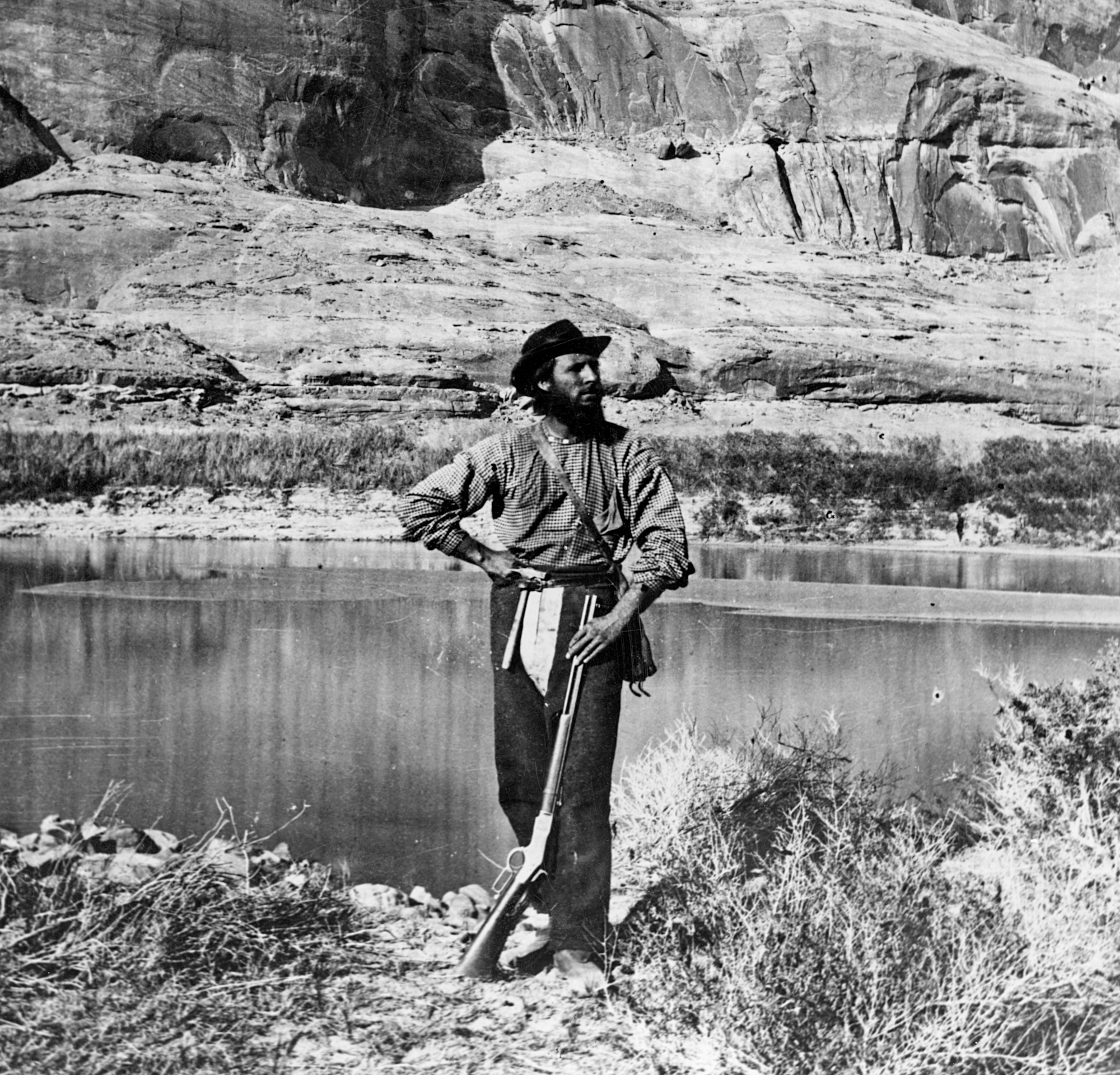
One of the creative minds that helped build Marsh and Deering was John F. Steward. An adventurer at heart, he took the earnings from his first invention and joined the 1871 Powell river expedition into the Grand Canyon. Courtesy of the US Geological Survey
Growing up surrounded by farm innovation, Steward was an avid reader with a voracious appetite for history that grew into a love of geology and the natural world around him. He also grew tall and strong, just under six feet with a “dark complexion and handsome bearing.”
Like his counterpart Alexander Legge, Steward was handsome, intelligent, good with mechanical things, and driven. In personality, however, the two were quite different. Both were straightforward in manner, but Legge had the unique ability to vocalize his often-acerbic observations without upsetting the subject of his criticism.
The equally outspoken Steward had quite the opposite talent—an innate ability to draw ire. A Deering employee described Steward as follows: “In appearance and manner he was uncouth and very difficult to get along with. He seemed to make an enemy of almost everyone with whom he came in contact.”
Steward strongly disagreed with the McCormick claim that Cyrus Sr. was the sole inventor of the reaper, and his biting prose displays his ability to draw the ire of his foes:
“Popular belief that Cyrus H. McCormick invented the reaper and thus laid the foundation for Harvesting Machinery is as deeply rooted as the child’s faith in Santa Claus . . . It is a half-century since Cyrus H. McCormick began advertising and claiming he was the inventor of the reaper. It has been dinned into the ears of the press, into the ears of editors, has found its way into Encyclopedias and has loaded the shelves of our libraries with false biographies.”
One of the innovative reapers of the 1860s was the Marsh Harvester, which was invented by Charles Wesley Marsh and his brother, William Wallace Marsh, with refinement help from the Steward family. The first patent was filed in 1858. Floyd R. Ritzman, Northern Illinois University Collection
While acrid in style, Steward’s book presents a mountain of carefully assembled evidence for his claim, citing law, patents, court cases, and McCormick family members, all of whom indicate quite clearly that McCormick was not the sole inventor of the reaper. While Steward was not an impartial observer—his documentation is extensive and convincing.
Legge and Steward would both contribute greatly to their times, with innovation, leadership, and integrity. Steward simply left behind a larger number of enemies.
At age twenty-one, Steward volunteered for the Union army, fighting in the Civil War with Company F, 127th Illinois Volunteer infantry.36 During the Vicksburg Campaign, he sustained a chest wound and back injury, and he was transferred to the reserves in Michigan. He married a local woman, Sarah Louise Chandler, and returned to Plano.
After coming back, he went to work at Marsh Harvester, which was benefiting from a growing demand for farm machines as America’s work force was sent to war. Like the World Wars in the twentieth century, the Civil War–induced shortages of manpower and need for higher yields accelerated the mechanization of agriculture.
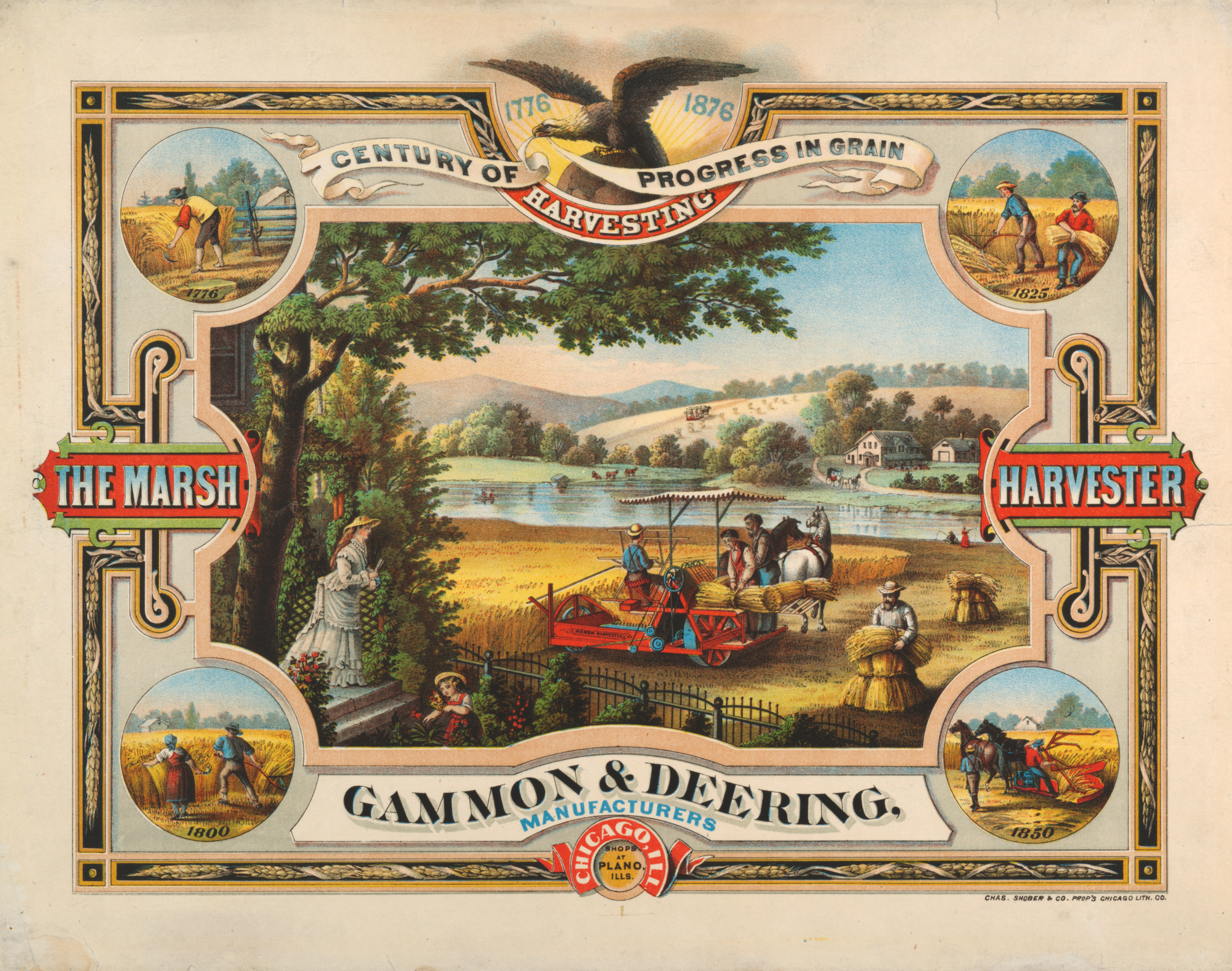
Deering invested $40,000 with his acquaintance, Elijah Gammon, who had a license to build Marsh harvesters. Wisconsin Historical Society / 4280
Steward was the right man for the times, and his mechanical genius served him well while he worked for the local harvesting company. He invented a small device that greatly improved manufacturing of the Marsh harvester and was awarded $6,000.
He took the money and volunteered to serve on Major Powell’s 1871 expedition as an assistant geologist, helping the team explore and map the Green and Colorado Rivers and the Grand Canyon. This was the second expedition by Powell, who did part of the route in 1869. Steward’s war-injured back did not serve him well in this hostile environment, and six months into the expedition, he was forced to hobble home. (Powell went on to great fame. Lake Powell is named after him, and the story of the expedition was captured in books, theater, and film—including the movie Ten Who Dared, produced by Walt Disney in 1960.)
Steward returned to Plano, once again to work for the Marsh harvesting company, which by that time had grown, striking a deal with Elijah Gammon, who had purchased a license to build the Marsh harvesting machines in 1870.37 William Deering, a successful businessman turned investor, put $40,000 in the company not long after. This investment would transform the fortunes of the Marsh brothers and the Steward family.
For more stories like this one, check out the Related Content and Related Books linked below!


